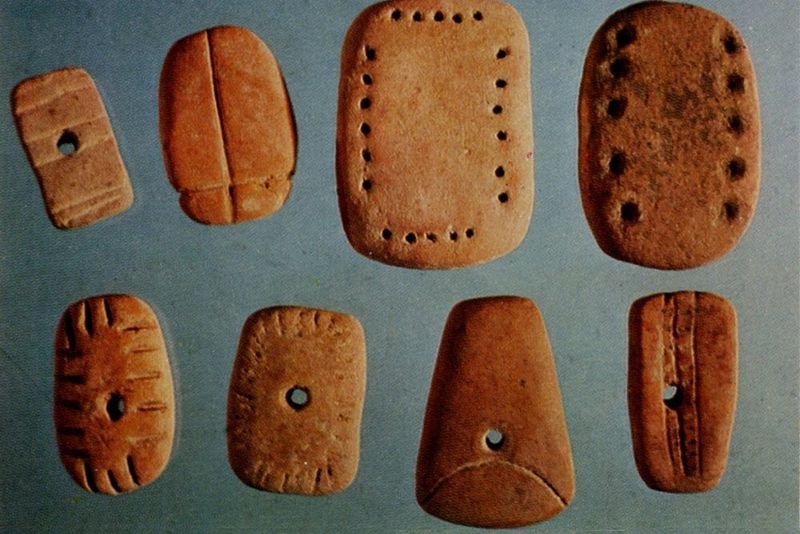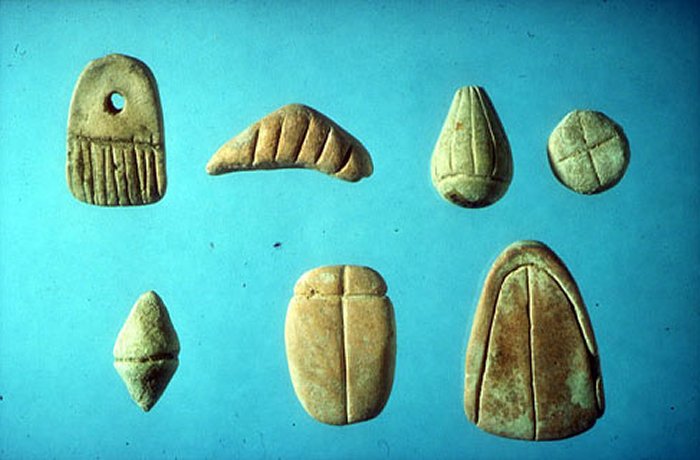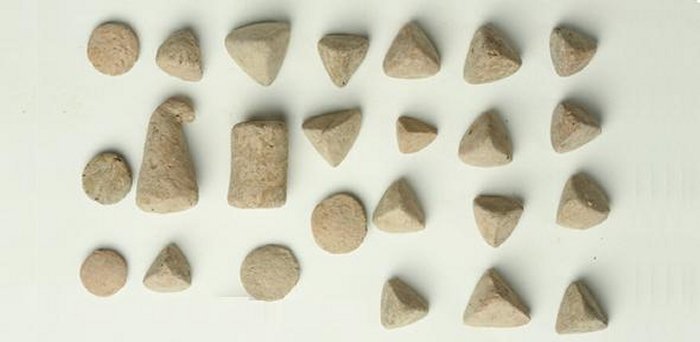Intriguing Sumerian Clay Tokens – An Ancient ‘Book Keeping’ System Used Long After Writing Appeared
AncientPages.com - About 5,000 years ago, people in Mesopotamia used intriguing clay tokens of multiple shapes to count and communicate.
People recorded information about their agricultural goods--including domestic animals and plants and to do so they used small clay tokens that were of different size and shape. Interestingly, archaeologists have discovered clay tokens were used long after writing was invented.
Sumerian clay tokens - Image credit: Denise Schmandt-Besserat
Sumerian clay tokens were often shaped like cones, spheres, disks, cylinders, tetrahedrons and ovoids and their size could vary from 0.5 to 1.25 inches.
Clay Tokens Could Be Used No Matter Of What Language You Spoke
The first tokens appeared in the Near East 7500 B.C. and they were made in the image of the goods they represented. For example, a cone abstracted a measure of grain.
Ovoids were jars of oil, cylinders a sheep or goat and tetrahedrons a person-day of work.
Sumerians used the tokens to count in a different way that we do today. We use abstract numbers, which means that our numbers “one,” “two,” “three,” are independent of the item counted and therefore universally applicable.
It was not so at the time when tokens were used. Between 7500-3100 BC, counting was restricted to selected units of goods, mostly measures of grain, jars of oil, animals and units of labor, based on time and task.
Moreover, each category of item was counted with its own counter, reflecting the fact that counting was “concrete,” meaning that each category of item was counted with a special numeration or special number words specific to that particular item.
See also:
‘Collata Quipu’ May Explain Messages Hidden In Mysterious Writing Of Inca
Controversial Tartaria Tablets: The First Writing System In The World?
The tokens were not difficult to produce. They were made of clay and incised with lines or dots or embellished with pellets of clay. These were then sun-dried or baked in a hearth.
Plain tokens from Jarmo, Iraq, ca. 6500 BC.
One great advantage with clay tokens was that they were non-lingual. It was an easy way to communicate because no matter what language you spoke, both parties understood that a cone meant a measure of grain.
Clay Tokens Were Used Even After The Cuneiform Script Appeared
It was previously thought that clay tokens were no longer used about 3,000 B.C because they were replaced by the cuneiform script, a more elaborate writing system.
Cuneiform tablets were one of the earliest systems of writing invented by the Sumerians. However, while excavating at Ziyaret Tepe, southeast Turkey, archaeologists uncovered a large number of clay tokens that were used as records of trade.
Scientists say clay tokens were integral to administrative functions right across the Assyrian empire – millennia after this system was believed to have vanished. Clay tokens were part of a prehistoric ‘book keeping’ system that continued long after invention of writing.
These clay tokens were found at a dig site in Turkey. Archaeologists think they were used as part of ancient system of record-keeping. Credit: Ziyaret Tepe Archaeological Project
Archaeologists say that while cuneiform writing was a more advanced accounting technology, by combining it with the flexibility of the tokens the ancient Assyrians created a record-keeping system of greater sophistication.
It should be added that Sumerians were not entirely the first to use a token system About 20,000 years ago, Upper Paleolithic people left marks and signs on walls and sticks to communicate. What is unique about clay tokens is that these artifacts represent the first significant step towards communication how storage and retrieval should be handled.
Copyright © AncientPages.com All rights reserved. This material may not be published, broadcast, rewritten or redistributed in whole or part without the express written permission of AncientPages.com
More From Ancient Pages
-
 Ancient DNA Sheds Light On ‘Lost’ Indigenous People Of Uruguay And Reveals A Surprising Connection
Archaeology | May 11, 2022
Ancient DNA Sheds Light On ‘Lost’ Indigenous People Of Uruguay And Reveals A Surprising Connection
Archaeology | May 11, 2022 -
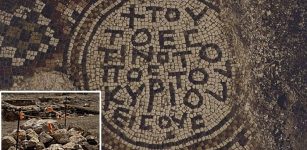 The 6th Century Byzantine Church Hidden Within Khirbet Tinshemet’s Woods – Discovered
Archaeology | Oct 2, 2024
The 6th Century Byzantine Church Hidden Within Khirbet Tinshemet’s Woods – Discovered
Archaeology | Oct 2, 2024 -
 Rare Gothic Boxwood Miniatures – Precious Marvel Of Human Ingenuity
Artifacts | Dec 30, 2019
Rare Gothic Boxwood Miniatures – Precious Marvel Of Human Ingenuity
Artifacts | Dec 30, 2019 -
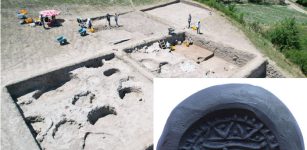 3,300-Year-Old Mycenaean-Like Seal And Dagger Discovered In Turkey
Archaeology | Jul 22, 2022
3,300-Year-Old Mycenaean-Like Seal And Dagger Discovered In Turkey
Archaeology | Jul 22, 2022 -
 Queen Teuta: Power-Hungry Villain Who Underestimated The Romans
Featured Stories | Oct 31, 2019
Queen Teuta: Power-Hungry Villain Who Underestimated The Romans
Featured Stories | Oct 31, 2019 -
 Unusual Neolithic Burial From Grotta Di Pietra Sant’ Angelo Puzzles Archaeologists
Featured Stories | Jan 15, 2024
Unusual Neolithic Burial From Grotta Di Pietra Sant’ Angelo Puzzles Archaeologists
Featured Stories | Jan 15, 2024 -
 Unique Medieval Perfectly Preserved Sword Found In The Odra River, Poland
Archaeology | Aug 12, 2020
Unique Medieval Perfectly Preserved Sword Found In The Odra River, Poland
Archaeology | Aug 12, 2020 -
 Legend Of Brigadoon: Mythical Village Where Time Stands Still
Featured Stories | Nov 2, 2016
Legend Of Brigadoon: Mythical Village Where Time Stands Still
Featured Stories | Nov 2, 2016 -
 Mystery Of Vitrified Scottish Fort Dun Deardail And Ancient Myth Deirdre Of The Sorrows: Is There A Prehistoric Connection?
Civilizations | Feb 5, 2021
Mystery Of Vitrified Scottish Fort Dun Deardail And Ancient Myth Deirdre Of The Sorrows: Is There A Prehistoric Connection?
Civilizations | Feb 5, 2021 -
 Archaeologists Will Excavate Unique Ancient Roman Obelisk Near Lesicheri, Bulgaria
Archaeology | Apr 8, 2016
Archaeologists Will Excavate Unique Ancient Roman Obelisk Near Lesicheri, Bulgaria
Archaeology | Apr 8, 2016 -
 New Light On Foodways In The First Cities In Mesopotamia
Archaeology | Nov 21, 2022
New Light On Foodways In The First Cities In Mesopotamia
Archaeology | Nov 21, 2022 -
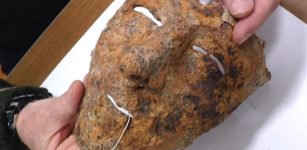 Extremely Rare Roman Cavalry Parade Mask Discovered In Romania
Archaeology | Feb 8, 2023
Extremely Rare Roman Cavalry Parade Mask Discovered In Romania
Archaeology | Feb 8, 2023 -
 Vesta And Her Six Vestal Virgins – Highly Venerated Goddess Of Hearth And Family
Featured Stories | Dec 24, 2019
Vesta And Her Six Vestal Virgins – Highly Venerated Goddess Of Hearth And Family
Featured Stories | Dec 24, 2019 -
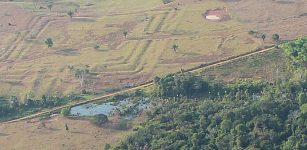 Millennial Pre-Colonial Cultural Influence Is Evident In The Amazon Forest
Archaeology | Jun 28, 2020
Millennial Pre-Colonial Cultural Influence Is Evident In The Amazon Forest
Archaeology | Jun 28, 2020 -
 LIDAR Technology Reveals Secrets Of Ancient Maya Civilization
Archaeology | Feb 3, 2018
LIDAR Technology Reveals Secrets Of Ancient Maya Civilization
Archaeology | Feb 3, 2018 -
 Unique Life-Sized Camel Carvings In Northern Arabia Are Much Older Than Previously Thought
Archaeology | Sep 15, 2021
Unique Life-Sized Camel Carvings In Northern Arabia Are Much Older Than Previously Thought
Archaeology | Sep 15, 2021 -
 Dozens Of Ancient Villages Discovered In British Columbia – The Pit Houses ‘Older Than The Pyramids’!
Archaeology | Apr 9, 2025
Dozens Of Ancient Villages Discovered In British Columbia – The Pit Houses ‘Older Than The Pyramids’!
Archaeology | Apr 9, 2025 -
 Ponderosa Pine: Life And Death Of One Of America’s Most Mysterious Trees
News | Mar 18, 2020
Ponderosa Pine: Life And Death Of One Of America’s Most Mysterious Trees
News | Mar 18, 2020 -
 Middle Iron Age And Roman Period Buildings And Relics Discovered In Bedfordshire, UK
Archaeology | Feb 27, 2022
Middle Iron Age And Roman Period Buildings And Relics Discovered In Bedfordshire, UK
Archaeology | Feb 27, 2022 -
 Sacred Helgafell Mountain And The Story Of Torolv Mostrarskjegg
Myths & Legends | Mar 13, 2024
Sacred Helgafell Mountain And The Story Of Torolv Mostrarskjegg
Myths & Legends | Mar 13, 2024

